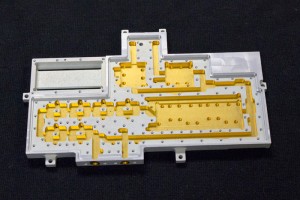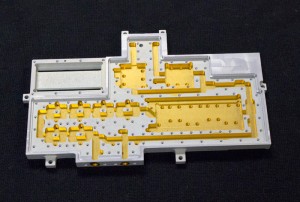

The Benefits of AlBeMet For Industrial Use
What is AlBeMet Used For?
AOTCO Metal Finishing works with an extensive list of metals commonly used in scientific and industrial applications. At the top of the list, in alphabetical order, is AlBeMet.
Developed by Materion Corporation, AlBeMet is an aluminum-beryllium metal composite. It is 62% commercially pure beryllium and 38% pure aluminum. It is a powdered substance that is consolidated by Hot Isostatic Pressed, Extruded, and Rolled Sheet. It combines the high modulus and low density found in Beryllium metals with the easy fabrication and mechanical properties of Aluminum.
This trademarked material has numerous remarkable properties. The powder organizes aluminum between beryllium dendrites producing a uniform microstructure. It has a very low thermal expansion coefficient but a high thermal conductivity.
The high Modulus–to –density ratio is 3.8 times that of aluminum or steel and has twice the typical fatigue limit of aluminum. Combined with the limited thermal expansion and thermal conductivity, this makes this material ideal for circuit boards.
AlBeMet also has applications in aerospace, defense, electronics and satellite technology. It is easy to use, versatile and can be manufactured with the same metal finishing techniques as aluminum.
How is AlBeMet made?
AlBeMet is formed by consolidating gas atomized pre-alloyed powder. Each of the powder particles holds aluminum between beryllium dendrites, this creates a uniform microstructure. Pure beryllium powder can be hazardous to inhale for some employees, so the process includes safety procedures to ensure employee safety.
AlBeMet High Thermal Conductivity and Stability
AlBeMet possesses a unique physical property combination of high thermal conductivity and a low thermal expansion coefficient. This means that AlBeMet can be utilized in components that experience high temperatures because it expands much less than other metals do when heated while also remaining a good thermal conductor.
Light Weight and High Specific Stiffness
Another unique feature of AlBeMet is that it is lightweight while still having a high specific stiffness. AlBeMet is much lighter than its metal constituents like steel or titanium. When changing to lighter materials, a typical consequence is that the stiffness levels are likely to also be lower. This is not the case for AlBeMet.
Being lighter than steel but just as stiff makes the alloy attractive to the Aerospace industry, where weight reduction solutions are highly sought after. The material is also more flexible than steel or titanium, making it a very versatile composite.
Cost Efficiency
While AlBeMet is initially more expensive than traditional aluminum, it lasts almost twice as long making it a more cost-effective metal in the long run. It is also a cheaper (and in some instances more effective) alternative to titanium. The compound is also easier to machine than titanium and other metals (including aluminum), making it a more cost-effective option in components with complex or unique geometries.
Other Benefits of AlBeMet include:
- Lower Maintenance
- Smooth Surface Finish
- Design Flexibility
- Repeatability and Consistency
Principal Uses of AlBeMet
Aerospace Manufacturing
No manufacturing industry is more interested in reducing the weight of their products more than the Aerospace industry. Dealing with a wide variety of aircraft, it is key that they are manufactured with the lightest functional material possible. Since its creation, AlBeMet has been frequently used in the aerospace industry on a wide range of different components. From small parts like antennae or optical systems to larger applications with Boeing and SpaceX, AlBeMet is widely used in the Aerospace industry.
Electronics
Another common use for AlBeMet is within electronics. Due to its thermal capabilities, AlBeMet makes for an excellent pairing with electronic parts that experience frequent use and must combat overheating. On top of this, the high specific stiffness leads to a vibration dampening quality that is vastly superior to its metal peers. By dampening vibrations and managing temperature, AlBeMet greatly increases the longevity and effectiveness of electronic components.
Defense Industry
Another industry constantly looking for innovative ways to reduce size and weight, the U.S military has utilized AlBeMet in a variety of ways. The compound can be found in some of their aircraft, as well as their sensor and optical technologies. Much like the aerospace industry, AlBeMet helps military aircraft become stronger while simultaneously reducing weight. In addition, AlBeMet is also frequently used in ballistic missile designs, mainly for its unmatched dimensional stability and low thermal expansion levels.
These are only a few of the uses for AlBeMet. As the metal finishing industry continues to grow and change, it is certain that even more uses for AlBeMet will be developed.
In Conclusion
- AlBeMet is a fascinating advance in materials technology with a wide range of industrial uses
- Common uses for AlBeMet include circuit boards, satellite technology, aerospace and defense
- AOTCO Metal Finishing engineers and expert platers are available to support your team’s existing AlBeMet and new product design needs

